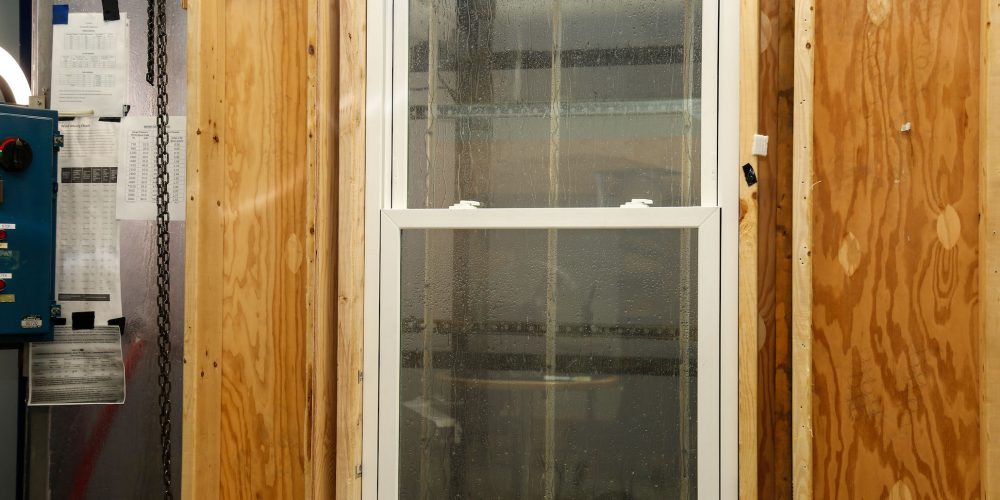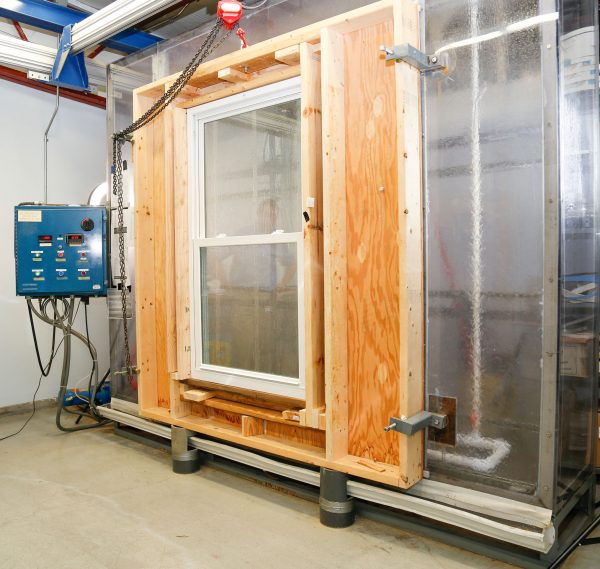Reduce Water Penetration by Pre-Testing with Window Weatherstripping to ASTM Standards
Return to Blog
Are you pre-testing for water penetration with window weatherstripping? If not, you may have joined the ranks of many other OEM design engineers who fail to pass official AAMA (American Architectural Manufacturers Association) or ASTM (American Society for Testing and Materials) certification tests. This failure to meet these industry standards results in lost time and money, which can cripple window/door manufacturers in today’s market.
In order to correct this problem, let’s take a closer look at one of these standards: ASTM E-547.
Standard Methods for Water Penetration Testing
1. Lab Testing: ASTM E-547
ASTM E-547 is a standard test method used to determine the water penetration resistance of exterior windows, skylights, doors, and curtain walls. During this test, a calibrated spray apparatus applies water and cyclic static air pressure to opposite sides of your product.
2. Field Testing: ASTM E-1105
ASTM E-547, considered a “laboratory test,” is similar to “field test” ASTM E-1105. ASTM E-1105 is specifically written for installed fenestrations. It is a field determiner for the water penetration resistance of installed exterior windows, skylights, doors, and curtain walls by uniform OR cyclic static air pressure.
3. Steady Air Pressure: ASTM E-331
Another similar test is the ASTM E-331. However, this one is different based on how air pressure is applied. ASTM E-331 is a uniform test that uses steady air pressure, while the cyclic test ASTM E-547 cycles air pressure on and off while testing.
 How Water Penetration Testing Works
How Water Penetration Testing Works
Let’s dive deeper into the process of one of these water penetration tests (pun intended!). How is the ASTM E-547 test performed? First, a water spray system applies water to the exterior of your window/door product. This system features multiple nozzles on a grid in order to evenly distribute the water, including the areas on your product that are vulnerable to water penetration. The water spray-rack system, or calibrated spray apparatus, transports water to your product at a rate of 5.0 U.S. gal/ft²-h.
Meanwhile, an air chamber built on the inside/opposite side of your product will decrease air pressure. The pressure is usually decided by the one testing your product. Common specifications settle at a minimum testing pressure of 6.24 psf.
Ready to Reduce Water Penetration?
We hope this information helps you gain a clearer understanding of what it takes to meet industry standards for water penetration resistance. If you want to pinpoint the cause of water penetration test failures, contact a qualified weatherstripping supplier. In some cases, they can pre-test your window/door product to AAMA/ASTM standards to reduce time and cost. After pre-testing they can recommend weatherstripping products and materials that could improve the water penetration resistance of your product. Then you’ll have a better chance of passing your AAMA/ASTM certified test so you can get your product on the market as fast as possible.
Posted on December 4, 2017


 How Water Penetration Testing Works
How Water Penetration Testing Works